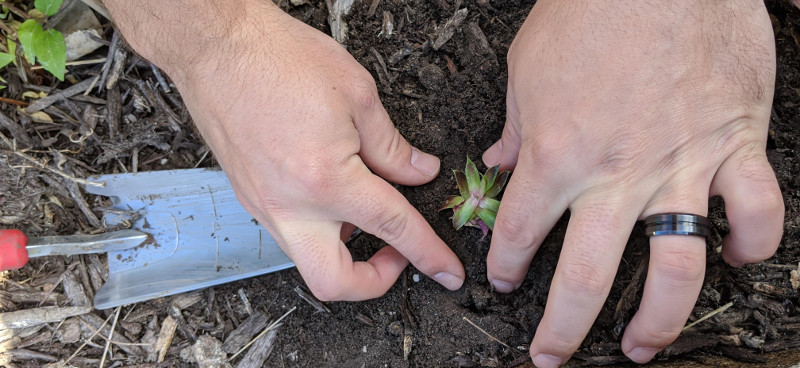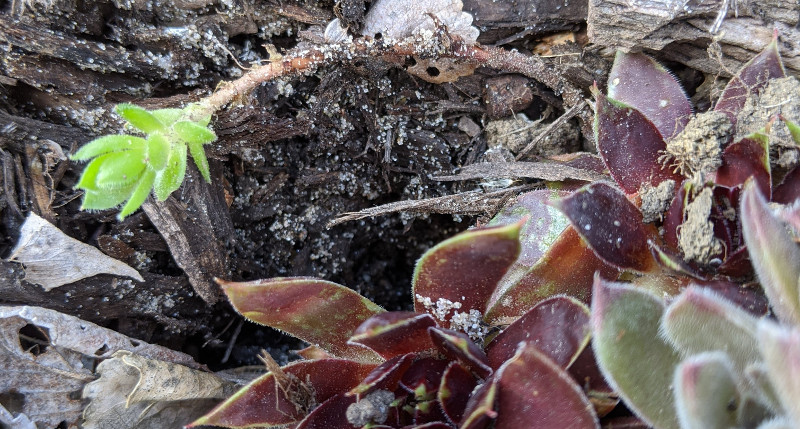Hens and Chicks (Sempervivum tectorum) is a fun and varied succulent that can be grown indoors or outside in some growing zones. The plant also is called House Leek.
What You Need To Plant Hens and Chicks
You will need a small shovel or hand trowel to dig a hole for hens and chicks plants that go in the ground or a container. The succulents don't need rich soil but should go in a sandy or gritty mix that drains well. This means either using a cacti and succulent mix for a potted sempervivum or adding some gritty material such as sand or small pebbles to help the ground drain well.

Where to Plant Hens and Chicks
Plant hens and chicks in full sun for best growth and health. The succulents do well in rock gardens, where heat reflects from the rocks. Place the crown, or center, or the main rosette so it sits level with the soil to match where it sat in its original pot.
Hens and Chicks Spacing
Although you can plant sempervivum among rocks or a rock wall, they need some room to grow. The plants spread out to form a mat of rosette clusters. Eventually, it can spread to at least 2 feet. Try to avoid placing other plants too close to the hens and chicks, especially if the nearby plants use much more water than the drought-tolerant succulent. Shallow and narrow containers are the best for hens and chicks to give the plants room to spread.
Steps To Plant Hens and Chicks
- Hens and chicks do not need a deep hole, but the hole should be deep enough to accommodate the plant's roots. Give the plant sandy or well-draining soil.
- A sunny location is best. If you live in colder zones for sempervivum (usually zone 3), be sure to plant the hens and chicks where they face south or along a south-facing wall to add to their heat in winter.
- Water a few days after planting, and give the plant a deep, slow watering about once a week after that. You soon will learn how quickly the ground or container soil dry out.
- You might have to divide the plant and remove some of the smaller rosettes after a few years.
- After the rosette flowers, which can take years, the rosette will die back. You can remove it, add some sand to the hole it leaves, and watch the chicks fill in later.
When to Plant Hens and Chicks
Plant sempervivums in spring or late spring after the last frost in your area. In colder zones, you can wait later. Just avoid planting it in peak summer heat or late fall. The plants do most of their growing in early fall months and then rest during winter. Plant indoor plants nearly any month, but they will do best if established before their fall growth spurt.
Transplanting Hens and Chicks
You can divide hens and chicks after they grow and spread. Choose a rosette that has roots. You can tell by gently digging up the entire plant or leaving it intact and selecting a rosette that is around the edges of the plant but not one of the youngest chicks. Use a sharp knife to slice the rosette off where it attaches to the main rosette.

If you want to propagate the cutting, let the cut heal and form a callus. Usually this means leaving it in a dry place for a few days. Then place the young plant in a small (3-inch) pot with gritty soil. It should take a few weeks to form roots. If your hens and chicks outgrows a container, you also can divide the plant and replant the original in the same or a larger container.
 |
Author Teresa Odle - Published 5-17-2020 |
